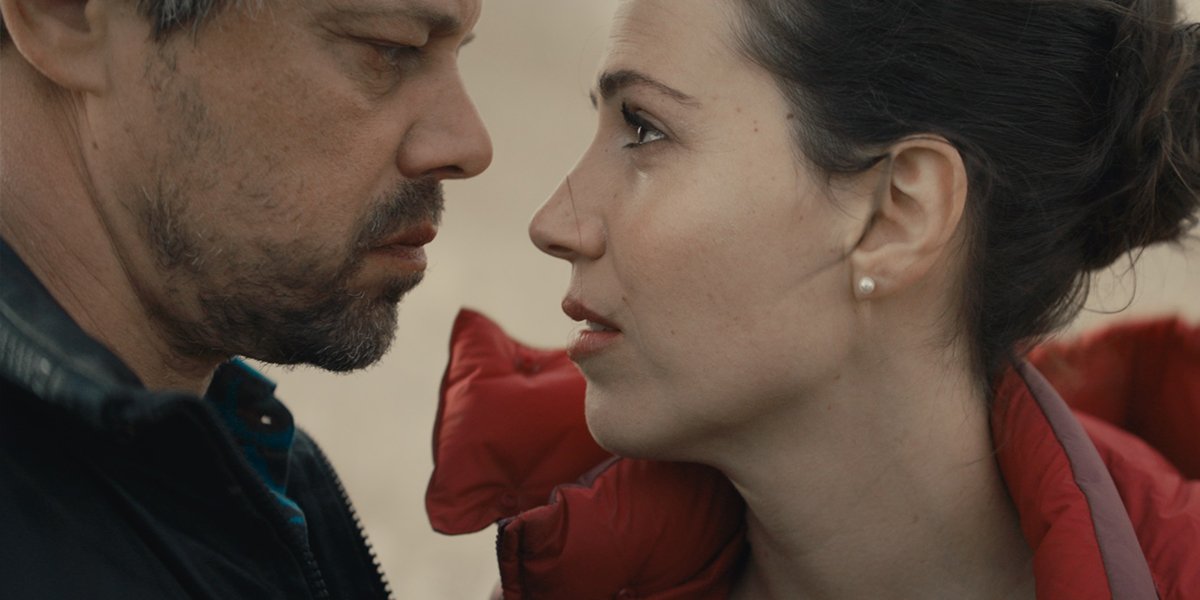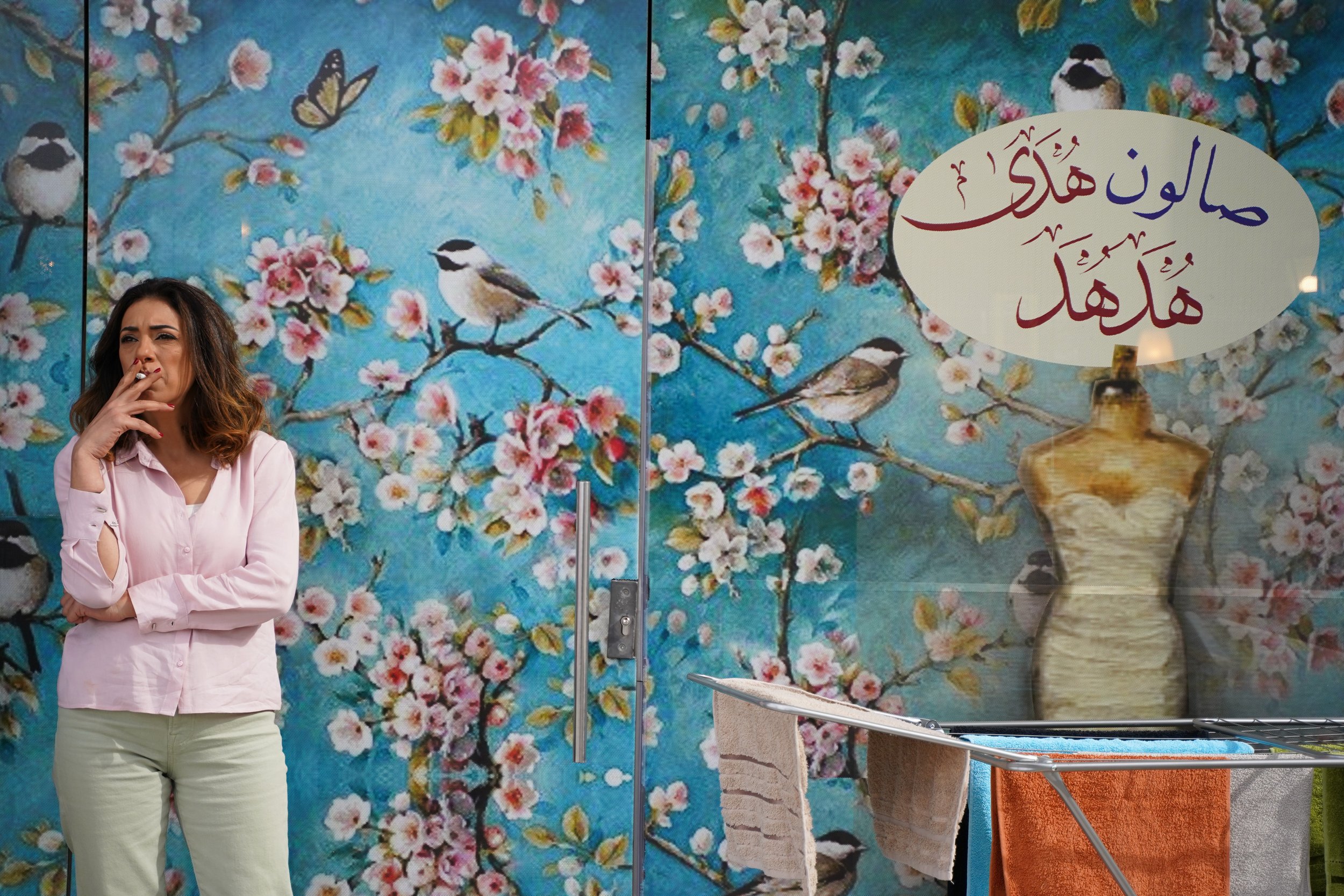
“Y” is a leather jacket-clad film director, scraggly and eccentric, dancing alone through an empty desertscape in Gaza. He bumps Israeli rock through his headphones and twirls in his Ray Bans before melodramatically face planting into the sand. “Ahed’s Knee” is about this quixotic protagonist’s struggle to make a film critiquing the Israeli government’s mistreatment of Palestinians. Loosely autobiographical, the film is based on the real-life experiences of its director, Nadav Lapid. ‘Ahed’s Knee’ confronts Israeli state censorship, but, curiously, it is funded by the Israeli government. The tension between individual and state vibrates throughout the entire film before erupting into a piercing political scream.
Is this film brave or cowardly? In the film, “Y” is trying to make a movie showcasing the true story of Ahed, a teenage Palestinian girl who was imprisoned for slapping the Israeli officer that shot her cousin. In response to her rebellion, a legislator tweeted that she should’ve been shot in the knee and incapacitated. But this, truly critical and transgressive film, is not the one that “Y” – or Lapid– ultimately make. Instead, viewers follow the filmmaker’s fraught battle against Israeli censorship. Ironically, Lapid’s “Ahed’s Knee” is a successfully censored film.

In the process of scouting locations and promoting his other films, “Y” travels to the remote desert town of Sapir in Gaza, where a doe-eyed bureaucrat named Yahalom forces him to sign a form committing only to discuss certain topics approved by the Ministry of Culture. This list includes, but is not limited to, comrades in arms, country and flag, Jewish diaspora, and Holocaust remembrance. Lapid had to sign the same form in order to make “Ahed’s Knee”, a film intended to be critical of the Israeli state. Both the protagonist and Lapid writhe with the inner conflict of the conformity required for rebellion. Lapid and “Y” had to succumb to censorship in order to critique it, and the viewer is left unsure of whether they’re watching political critique or propaganda.
The decision of whether to accept his ruin as a filmmaker or comply with Israeli censorship is the internal conflict that tortures our protagonist throughout the film. While the artist’s dilemma seems self-indulgent, it poses the important question of whether any filmmaker or artist, inside or outside of a censorship regime, is really any different. One can only have the luxury of critique from the pedestal of privilege, and every artist must conform to censors– whether they be state-sanctioned or forged in the court of public opinion. “Ahed’s Knee” poses interesting questions about whether art can ever be truly transgressive. Who does art speak for? Can a film be both rebellious and successful? Or is what is popular never revolutionary? On the other hand, is it an impossible and self-defeating exercise to demand that artists execute themselves or their careers for their art? It would be a futile exercise to demand true critique if the art never saw the light of day.

“Y”’s inner turmoil in the film mirrors the political one inside Israel’s own borders, where a conservative government debates its own frustrated liberal elite. “Ahed’s Knee” is bereft with an uneasy tension—a state borne of escaping oppression, itself creeping towards totalitarian censorship. This is Israel’s internal conflict, and the warring voices of the country fight themselves out in the head of our protagonist, like a man possessed, until they jet out of him in violent rage. “Y” decides to publicly humiliate Yahalom, the kind but unsophisticated bureaucrat, and encourage her to kill herself. The film comes to a pressure-cooker climax when Yahalom is about the jump off a cliff and her teenage sister saves her life by curtailing “Y”s encouragement of her suicide. Perhaps as an analog to Ahed herself, Lapid has the teenage girl walk up to “Y” and repeat the phrase “you are good” over and over until he unravels in a cathartic weep. As such, the bureaucrat is saved from being the emissary victim of the artist’s need to feel morally justified. This scene is the artist trying to quell the feeling of being bad, of being a critic at all costs, even when the lives of the innocent are at stake. All “Y” wants is to be seen as good by the future generations.
“Ahed’s Knee” is a thought-provoking and ambitious film. The script was written in two weeks, which sometimes gives us beautiful, unnecessary gems that might have otherwise been cut—joyful dance sequences to “Lovely Day” or “first-person” camera shots where the angle turns to what the character (rather than the viewer) is focused on in a given moment. Other times you see stress fractures in the plot and character development, herky-jerky escalations and abrupt conversational cadences. Though you can sometimes see the seams, the tapestry is powerful and purposeful. Overall, it is an important film about the political and social pressures that bring the film world to its knees.

Ahed’s Knee is in select theaters now.















